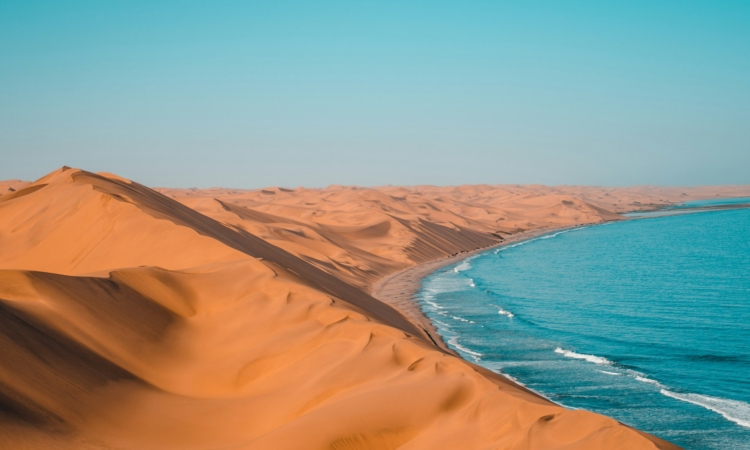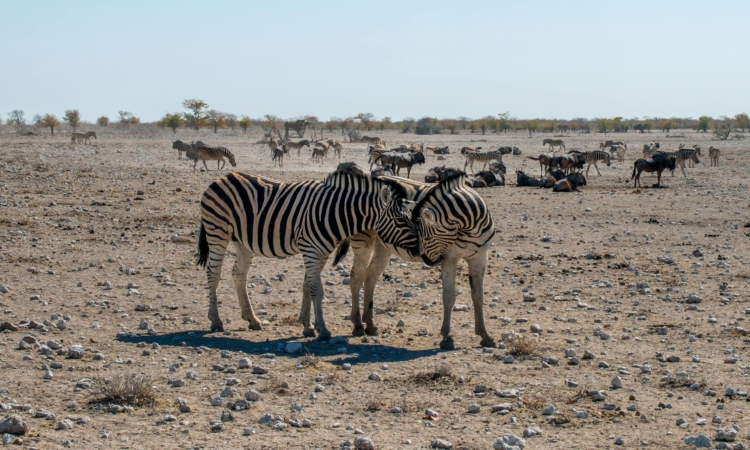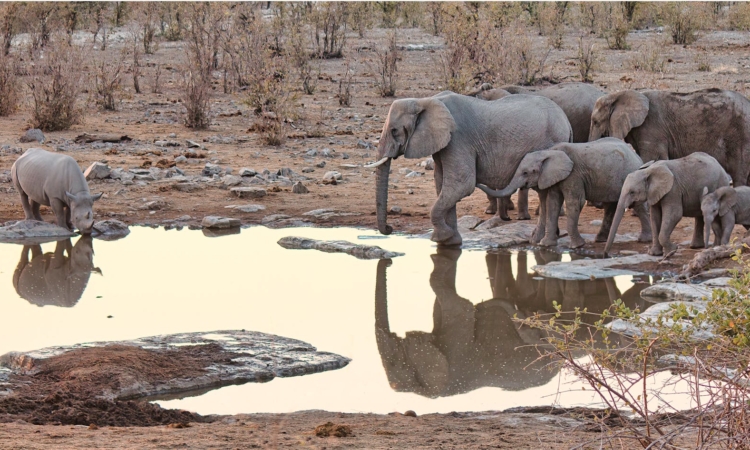Searching for transportation to Sossusvlei? We’ll cover all you need to know in this Namibia travel guide so you can enjoy your trip to the dunes, Deadvlei, and Sossusvlei, our favorite places in Namibia.
Sossusvlei is a salt and clay pan surrounded by tall red sand dunes in the southern part of the Namib Desert, inside Namib-Naukluft National Park.
The word “Sossusvlei” means “the marsh of no return” and is often used to describe the whole area.
Deadvlei is a clay pan with dead camel thorn trees that are around 900 years old. These trees have not rotted because of the very dry climate.
The sand dunes in this area are among the highest in the world. The tallest one is Big Daddy, which is about 325 meters high. Many other dunes are over 200 meters.
The red color of the sand comes from iron. The older the dune, the redder it looks.
How to Get to Sesriem/Sossusvlei
Driving is the best way to reach Sossusvlei, Deadvlei, and the dunes. If you are driving from Windhoek, the first part of the road is paved, but after an hour or two, it becomes rough and gravelly.
You can drive a small car (we used a Suzuki Swift), which is cheaper, but a 4×4 vehicle is more comfortable. It depends on your budget.
Google Maps gives clear directions to Sesriem, a nearby town where I suggest you stay. But as with most trips in Namibia, add a couple of extra hours to your travel time just in case.
Places to Stay Near Sossusvlei
Where you stay will affect how easy or hard it is to visit Sossusvlei, Deadvlei, and the dunes.
Most campers stay near the park gate, which opens at 6:15 a.m. At this time, many cars are lined up, ready to drive 50 minutes to the dunes and catch the last part of the sunrise.
The best way to see the dunes is to stay inside the park. We stayed at the cheaper of the two places inside, Sesriem Camp, run by NWR.
It was still much more expensive than other campgrounds, and the quality was low, which is common with NWR camps. We paid 550 NAD (about £30) per person per night and brought our own tent.
This was three times more than we usually paid in Namibia. There is also a daily park fee of 100 NAD per person and 50 NAD per vehicle.
The big advantage of staying inside the park is that you can drive to the dunes at 5:15 a.m., one hour before sunrise and before anyone else at the gate.




